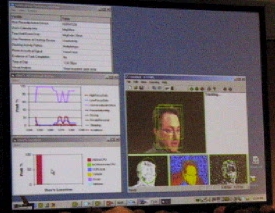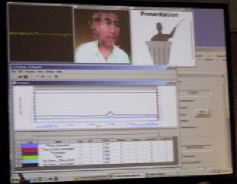Gates: AI for the billions
August 8, 2001 | Source: KurzweilAI
SEATTLE, Aug. 8 – The vast majority of Microsoft research–included in the firm’s $5.3 billion R&D budget for FY 2002–is for AI-related projects, Microsoft Chairman Bill Gates said, speaking at the International Joint Conference on Artificial Intelligence.
Microsoft’s research is focused on traditional AI areas, such as decision-making, learning, language, and speech recognition. “We are putting our money where our beliefs are: that these things will become real and allow us to build far, far better software products than we have today … for many hundreds of million if not billions of people who will be using and taking advantage of every day.”
Microsoft researchers showed several examples of current projects:

Visual analysis to determine recipient activity

Real-time spectral analysis to localize speakers in an office
“We’re proceeding full-speed ahead,” said Gates. “We look forward to delivering your work to hundreds of millions of users.” However, in a Q&A, Gates admitted some AI failures so far in “social user interfaces,” such as Microsoft Bob and the much-criticized Clippy, which he described as “too obnoxious.”
“Unless there’s a deep model behind those anthropomorphic interfaces–until you cross over some threshold–it’s like speech recognition: it demos well and in practice, it’s kind of irritating. In think when you stand in front of your TV set in say, five years, we will have a rich-enough model. So we’re unabashed in terms of the approach, despite admitting our complete failures today.”